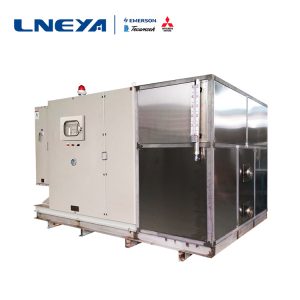The Reasons of Frosting on Ultra low Temperature Recirculating Chillers
Frosting will appear when many users take advantage of refroidisseurs à recirculation à ultra basse température, while some are not. It is confusing and whether it is relevant to refrigeration.
First of all, why does ultra low temperature recirculating chillers frost? To sort it out, we can turn our eyes on the reasons of direct-cooling ultra low temperature recirculating chillers. The frost is a white crystal of vapour which will congeal on the surface of ultra low temperature objects.
The air will frost on the surface of the inner wall inside ultra low temperature recirculating chillers, which is the root cause. It will affect the heat transfer efficiency, resulting in the decline of refrigerating capacity, so the users should remove it manually.
We understand why the ultra low temperature recirculating chillers will frost on one hand, and for the other hand the air-cooled one is frostless. Are their reasons against each other? The principle of that is the air-cooled ultra low temperature recirculating chillers applies air to refrigerate. When high temperature air flows through the inner evaporator, both of them will change the heat directly because they are in opposite conditions so that the temperature of air will lower.
Meanwhile, cool air is blown in the ultra low temperature recirculating chillers, which is exactly what air-cooled one uses for cycling constantly to reduce its own temperature. However, vapor always exists in the air, so it becomes solid when it freezes, which shows that whenever heat transfer happens, frosting will be in the ultra low temperature recirculating chillers.
In fact, air-cooled ultra low temperature recirculating chillers is carried with frost, but only on the surface of the evaporator. When opening the door, we can not see it because the frost is inside. Thus, we call it as frostless on the whole.
Therefore, we make it clear why ultra low temperature recirculating chillers is out of frosting.
Recommandations connexes
-
About vocs condensation adsorption machine resonance fault description
1132When choosing vocs condensation adsorption machine, LNEYA recommends selecting reliable vocs condensation adsorption machine equipment to avoid some simple faults, but if a similar resonance fault occurs, it needs to be solved in time. For VOCS ga...
Voir les détails -
Semiconductor diffusion furnace configuration temperature control equipment
1071In the semiconductor industry, a diffusion furnace is a device used to manufacture doping layers on the surface of semiconductor materials. It achieves the doping process through high-temperature heating and controlled diffusion atmosphere...
Voir les détails -
Where will the reactor be used? How about the reactor temperature control system?
884Generally, non professionals should be confused about the reactor. The reactor is composed of reactor body, reactor cover, jacket, agitator, transmission device, shaft seal device, support, etc. It is generally understood as a container with physi...
Voir les détails -
Closed laboratory circulator enameled mixing tanks refrigeration and heating system
873Closed laboratory enameled mixing tanks refrigeration and heating system
Voir les détails
 LNEYA Industrial Chillers Fabricant Fournisseur
LNEYA Industrial Chillers Fabricant Fournisseur











